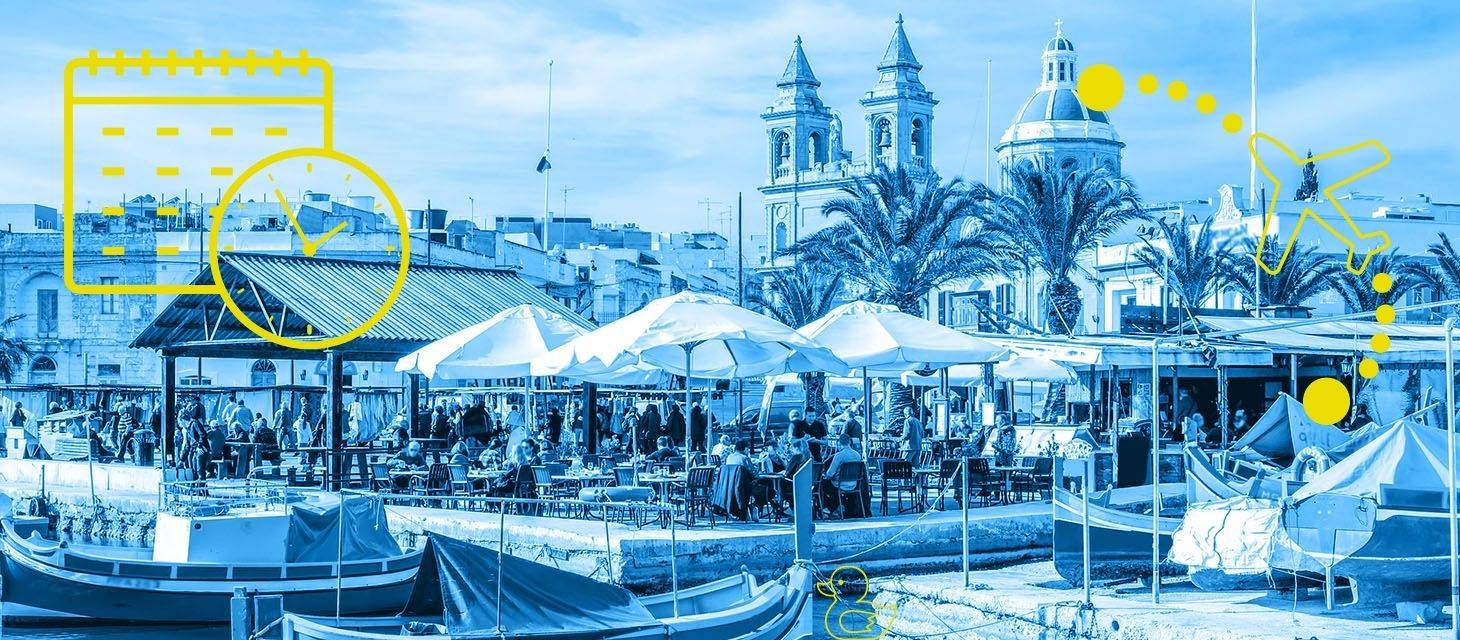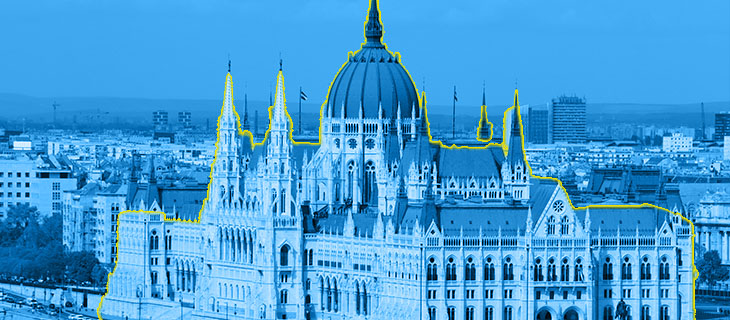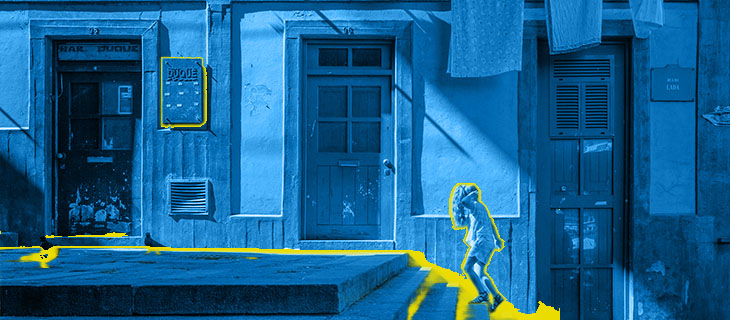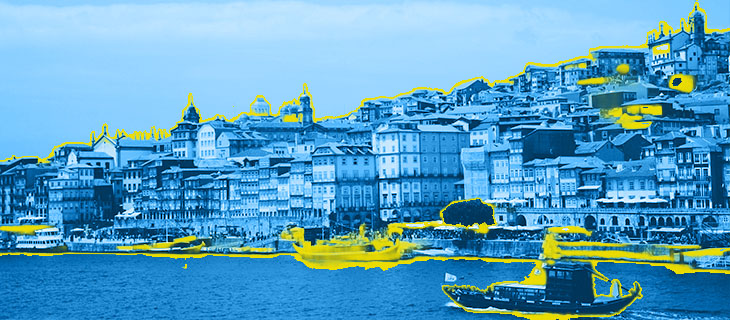Best Time to Visit Malta for Digital Nomads (+ Travel Tips)

Even with 300 days of sunshine and ideal weather, you may be wondering when the best time to visit Malta as a digital nomad is. Since you live a lifestyle of full-time travel, you are looking for something different than a simple week-long vacation full of activities.
Instead, you’re searching for a time that best suits your lifestyle. This could mean going to destinations in the off-season to avoid large crowds of tourists. Or it could mean going when accommodations are priced at their lowest for the year.
Whatever you’re searching for, Malta is a great destination year-round. However, there are certain months that are more fitting for certain activities and interests.
While it may be one of the smallest countries in Europe, Malta has so much to offer digital nomads including lightning-fast wifi, incredible Mediterranean beaches, rich history, and a community of remote workers.
Plus, remote workers can live in Malta for one year with the Nomad Residence Permit by the Residency Malta Agency – we’ll go into more detail about this a bit later.
There are many “best” times to visit Malta. In this article, we’ll help you decide when it’s best for you to live in Malta and work remotely based on your interests and what you enjoy while living a digital nomad lifestyle.
When is the Best Time to Visit Malta?
We have to use the word “best” lightly considering it means something different for everyone. The best time to visit Malta depends on what you’re looking to partake in while you’re there.
No matter how you would describe the best time to visit Malta, this gorgeous country is truly a great destination no matter what time of the year it is. There is no “bad” time to visit!
Although, if you really want a straight and personal answer, we would have to say that April to June is the best time to visit Malta as a digital nomad or as a tourist.
However, in this article, we’ll dive into what you can expect during each time of the year in Malta to better help you decide when you would like to go.
Malta’s Travel Seasons
Until recently, Malta was purely seen as a vacation destination, thanks to its stunning beaches, crystal clear waters, and laidback island life atmosphere. However, in recent years, digital nomads have grown fond of this country, making it one of the best digital nomad destinations in Europe.
As with many island destinations, especially ones that welcome visitors, there are set travel seasons. During these seasons you will see changes in the number of tourists and prices of accommodation.
High Season (June to August)
The time of year when you will find the most tourists and visitors in Malta is from June to August. This is prime vacation season when the weather is at its warmest, and people can take a break from work to enjoy and relax.
During this peak season, you’ll find restaurants and beaches crowded with tourists and hotel and Airbnb accommodations higher than the rest of the year. However, this is when you will probably experience the warmest and best Malta weather, perfect for soaking in the sun near the sea or taking a day trip on a boat to see the Blue Grotto or jump into the Blue Lagoon.
Since you’re a digital nomad who can travel whenever you want, we suggest waiting to visit Malta outside of the high season to save money and not get swallowed up by crowds. This is especially a good idea if you only have a minimal amount of time you can spend in this amazing country.
Shoulder Seasons (March to May, September to November)
For six months out of the year, Malta is an incredible place to live as a digital nomad. During the shoulder seasons, you’ll still get to enjoy optimal weather, partake in water sports, relax on the beaches, and experience cultural festivals, all without the high prices of the peak season and crowds of tourists.
In our opinion, the shoulder season is the perfect time to visit Malta as a digital nomad. You get all of the benefits of the peak season, like the weather, but without the overwhelming crowds and fighting for a reservation in a restaurant for dinner.
Low Season (December to February)
You’ll find that Malta grows fairly quiet during the winter months, but that doesn’t mean it isn’t a great time to visit or live there. The temperatures do drop to be a bit milder than the rest of the year, but they are still quite enjoyable.
In fact, this is the perfect time to go hiking or visit outdoor historical sites, which you’ll most likely have all to yourself. For those digital nomads who decide to live in Malta for a year, you may find that these quiet months are some of the most peaceful and relaxed on the islands.
The only downfall of being in Malta during the low season is that only the brave participate in water activities like snorkeling or diving as the water will be cold.
Is it a Bad Idea to Visit Malta in the Off-Season?
Choosing the best time to visit Malta is all up to what you want to experience. There is no bad time to visit, even in the off-season. You’ll still find plenty to do on the island. Plus, it can be easier to find and meet other digital nomads during this time in coworking spaces and cafes.
To sum up, it is not a bad idea to visit Malta during the low season.
Does Malta Have a Rainy Season?
One of the main selling points of going to Malta is the number of sunny days they have. On average, there are 300 days of sunshine on these Mediterranean islands. There is no set “rainy season” in Malta like in other digital nomad destinations.
The month with the most rain is December, with just an average of 9 days out of the month getting some precipitation. Other rainy months are January and February. You will also find that there are some overcast days during the shoulder and low seasons too.
You can always check the average temperature and weather in Malta to help you decide when the best time to visit is.
Cheapest Months to Travel in Malta
As a digital nomad, you’re probably pretty financially savvy and cautious of what you spend on your travel expenses and accommodation. Oftentimes, digital nomads take advantage of destinations with fluctuating tourist seasons so they can come in the shoulder or low seasons and get a good deal on their Airbnb rental.
The cheapest time to go to Malta is from December to February, during the low season. However, you can still find excellent prices for accommodations during the shoulder season from April to June and from September to November.
Don’t forget to use our Digital Nomad Budget Sheet to keep track of your expenses and stick to your financial goals so you can see more of the world.
Best Times to Truly Experience Malta
There is truly something for everyone to enjoy and experience in Malta. From historical ruins more than 7,000 years old to adrenaline-inducing water sports like diving and kayaking to hiking to simply relaxing on one of the many idyllic beaches, digital nomads of all ages can find something to enjoy.
However, there are certain times of the year when experiencing these activities is best. Below you’ll find the specific seasons for when to partake in these excursions.
Best Time for Sailing and Water Activities
As an island located in the Mediterranean Sea, it’s no surprise that you’ll find plenty of water activities and sports while in Malta. You can enjoy professional boat tours taking you to the most stunning spots to diving and exploring an underwater shipwreck to taking relaxing kayaking trips on calm waters.
The best time for sailing and water activities in Malta is from May to September. You’ll have ideal weather, warm waters, and excursion companies will be operating at this time.
Best Time for Visiting Historical Sites
Before heading to Malta as your next digital nomad destination, you’ll want to do a bit of reading about its unique and important history.
The islands are full of ancient ruins, like Ġgantija, megalithic temples built an entire millennia before the Egyptian pyramids were even built. UNESCO sites such as Ħaġar Qim and Ħal Saflieni Hypogeum, an underground burial site from prehistoric times, are definitely sites you don’t want to miss during your visit.
Another UNESCO site is the capital city of Valletta, built by the Knights of St John. Valletta is replete with baroque churches, military fortifications, grand palazzos, bastion gardens, and museums.
Since Malta was once a British colony one can also see buildings from the time of World War II like shelters, war rooms, forts, pillboxes, and other military architecture.
Indeed Malta is often called an open-air museum.
The best time to visit these historical sites without any crowds is during the low season. However, you may find the weather more enjoyable during the shoulder seasons with just a handful of tourists at the sites.
Best Time to Visit Malta Beaches
Whether you’re looking to take a dip in the water or open your digital nomad laptop for a couple of hours of work while listening to the waves, you can do so pretty much year-round at Malta’s gorgeous beaches.
Of course, it depends on what you’re looking to experience and enjoy while on the beach. The best months to go to the beach in Malta are from April to October. The weather is still warm, and you can still swim in the water without it being too cold.
There are a variety of beaches in Malta. You can choose smooth, sandy beaches like the Golden Bay, Riviera, Mellieha Bay, Paradise Bay, and Blue Lagoon or rocky cliffs like St. Peter’s Pool. There is truly a beach for everyone on the islands of Malta, Gozo, and Comino.
Festivals and Events in the Low Season
With such rich culture and history, there are plenty of events and festivals held all year round. Many you will also find in the shoulder and low season, giving you even more reason to apply for Malta’s digital nomad visa and live on the island for some time. Like many events across the world, Covid had an impact. However, things are now getting back to normal.
February: Carnival
Taking place the week before Ash Wednesday and the beginning of Lent in the Catholic Church, Malta celebrates Carnival. It’s one of the most exciting and most looked forward to festivals of the year.
You’ll witness large parades and people dressed in extravagant costumes dancing and gathering in the streets. It’s a time of pure enjoyment and merriment and something you definitely do not want to miss if you’re in Malta in February.
April: Festa Frawli (Strawberry Festival)
If you love a fresh, juicy strawberry on a warm spring day, then you definitely don’t want to miss Festa Frawli. Hosted in the town of Mġarr, you’ll experience a traditional Maltese festival with native instruments and music, and of course, dancing.
You’ll be seeing red with so many strawberries in one town! Plus, you can’t go wrong with all of the desserts, jams, and other delectable recipes offered during this annual festival.
April: Malta International Fireworks Festival
You’ve never seen fireworks just like this. Held every April for one week, the Malta International Fireworks Festival is a competition between musical firework performances across the islands.
With a promised grand performance on the last day, you’ll be stunned by these incredible displays of color, light, and musical rhythm. It’s a festival that you definitely do not want to miss as most of the population shows up for a great time and a beautiful show.
September: Festa Ħut (Fish Festival)
It’s no surprise that you’ll find plenty of seafood dishes served as part of Maltese cuisine. Every year in September, the fishing village of Marsaxlokk hosts a fish festival known as Festa Ħut.
You’ll get to admire the beautiful fish caught by the local fishermen, see the harbor sprinkled with colored boats known as “luzzi,” and get to taste some of the freshest fish in your life. Of course, there will be dancing along to traditional Maltese music and entertainment known as “għana” too.
October: Notte Bianca
On one night in October, the capital city of Valletta, lights up with artists, music, entertainment, and food for all to enjoy to celebrate Notte Bianca. The streets are full of street food stalls, museums and palaces open their doors to showcase local art and exhibitions, and many historic buildings open their doors to theatre and dance performances. It’s an all-around cultural festival enjoyed by residents and visitors alike.
October: Mdina Classic
The Mdina Classic Grand Prix is a race around the “Silent City” and Malta’s former capital city, Classic cars from before 1976 race around the winding streets to the cheers and excitement of the crowds along the track.
This is definitely one of the most unique festivals you’ll experience in Malta. It’s also perfect for digital nomads who want to stay in the country during the shoulder seasons.
December: Malta Christmas Markets
European countries are known for their detailed and exquisite Christmas markets… and Malta doesn’t disappoint! With stalls set up around the country celebrating the Christmas season offering handmade products as gifts for loved ones and traditional street food, it’s hard not to get into the joyous holiday spirit.
Make Malta Your Next Digital Nomad Destination
There are so many great events and weather year-round that it makes it difficult to decide on the best time to visit Malta as a digital nomad. Fortunately, you don’t have to choose just one season or month to visit and experience all Malta has to offer, thanks to the Nomad Residence Permit!
If you’re eligible to apply for Malta’s digital nomad visa, you can live in the country for one year. During this time, you’ll have a chance to make Malta home, learn about its culture and history, and participate in all of the festivals and events mentioned above. There is surely no FOMO when you receive the Nomad Residence Permit, specifically for digital nomads.
Let’s also not forget just how easy it is to apply for this digital nomad visa. The entire application process is done online, and you’ll receive an answer within 30 days. It doesn’t get much better than that!
See if you’re eligible for Malta’s Nomad Residence Permit now.
You may also enjoy

Before applying for a digital nomad visa, it is super important to understand everything about it—from the eligibility requirements to the application process to the implications of getting approval. We’ve…
by Brittany

It’s no secret that Porto is the second most popular city in Portugal for digital nomads. With a lively international community, beautiful city, and digital nomad-friendly cafes, remote workers are…
by Brittany

The Portugal digital nomad visa is one of the most popular and beneficial digital nomad visas for remote workers who wish to relocate to Europe. One of these attractive benefits…
by Brittany
